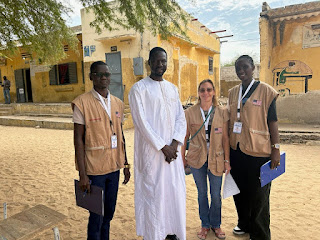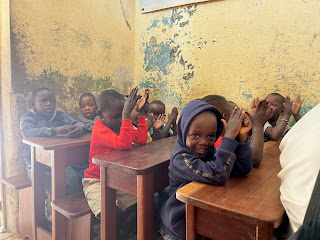Dakar is located where the western-most point of the African continent meets the Atlantic Ocean. Dakar has dozens of beaches, but the impressive waves often crash onto sand marred by trash. Beach cleanups are common and for Earth Day, I joined one at Ngor Beach.
 |
| Gotta start the day with a speech! |
The cleanup was organized by Grow Green Natange, a project to strengthen environmental conservation in Dakar. I arrived just in time to catch the opening speeches, which were passionate, if a bit lengthy. Once the speeches were out of the way, we received vests and gloves and set off to the clean-up location.
 |
Cleaning among the rocks
|
Beyond supplying trash bags for water bottles and food wrappers, the organizers provided shovels and rakes. The shovels were used to dislodge boulders that had trash trapped underneath, including discarded fishing nets that had snared all types of debris. Rakes were indispensable in pulling out litter floating in tidal pools around the rocks.
 |
| Erica with Fulbrighter Joelle |
It was smelly, dirty work. I choked back a gag reflex on a few occasions. But I helped fill dozens of trash bags alongside others, including the current group of Americans in Senegal on a Fulbright exchange program. Satisfyingly, the beach was visibly cleaner than when we arrived.
 |
| Clean beach lined with pirogue boats |













